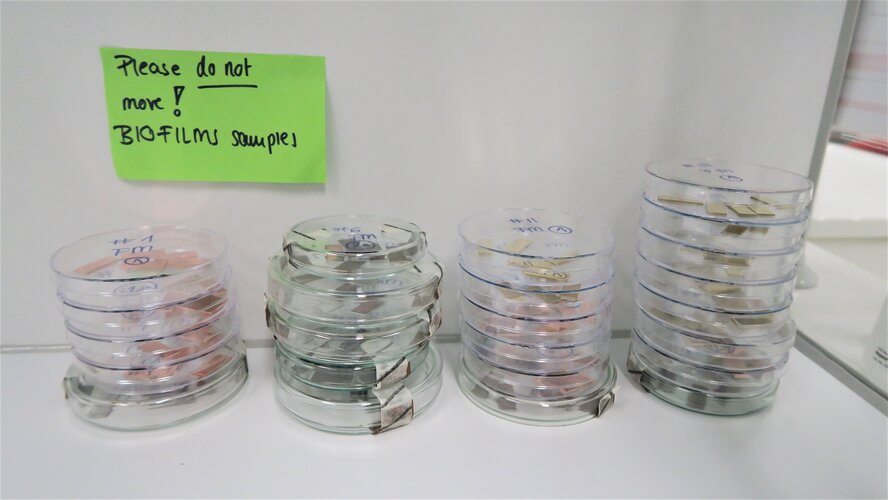
Image:
Samples of the Biofilms experiment are headed to the International Space Station on the SpaceX CR23 cargo resupply mission this weekend to help maintain astronaut and material safety in space.
A common piece of advice of the past 18 months has been to make sure you wash your hands thoroughly. This is because microorganisms are easily spread across common surfaces like door handles and light switches, and it is no less true in space. The Space Station is, after all, a lab as well as a home to astronauts. It is especially important to keep this environment safe for the long-term health of astronauts and equipment on board.
Funded by ESA and developed by the Chair of Functional Materials at Saarland University and the Working Group for Aerospace Microbiology at German Aerospace Center DLR, Biofilms will test the antimicrobial properties of laser-structured metal surfaces such as steel, copper and brass under microgravity conditions.
But what is biofilm? When growing on surfaces, bacteria can ooze a mixture of microbial structures such as proteins and lipids. The biofilm is what makes microbes resistant to antibiotics and disinfectants. Left to grow, biofilm can be hard to clean and can erode surfaces, especially metals.
To combat microbial growth, Biofilms will test the growth of bacteria such as human skin-associated bacteria Staphylococcus capitis with a novel approach. The innovation of the experiment lies in the structured surfaces of common metals. Using Direct Laser Interference Patterning (DLIP) to add texture to the surfaces, researchers will study how well microbes grow (or not) on copper, metal and steel. Findings could help prevent microbial contamination in space.
Researchers performed a dry run of the experiment on Earth and all parameters, including hardware provided by Keyser Italia, checked out. The experiment will soon take center stage in space, where 24 experiment cultures will grow in the European Columbus module of the Space Station.
Click here for original story, Film and cultures
Source: ESA Space News